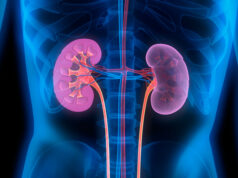
Home care is one of the fastest growing industries in the healthcare market, expected to exceed $240 billion globally by 2024. This is due to a number factors, primarily: the high rates of hospital-acquired infection; the growing realization that – particularly for elderly and chronic patients – rehabilitation is quicker and more effective in the comfort of one’s own home; and the significant cost savings associated with home care over hospital treatments. Above all, the growing trend towards self-administration is resulting in increasingly more treatments taking place at home, rather than in hospitals and infusion centers.
Despite the growing trend towards self-administration and home treatment, current drug delivery systems entail significant shortfalls. The majority of home treatments require IV infusions which, with the exception of very chronic patients, cannot be self-administered, requiring the insertion of a catheter into the vein. Thus, precious man hours, which could be put to better use, are wasted as infusion nurses are required to administer IVs and then remain with their patients for the duration of the infusion. Concurrently, the patient is unable to leave the home and is restricted in performing any number of routine tasks while undergoing their infusion.
As a result, pharmaceutical companies are increasingly working to remove the complexity involved in IV infusions by reformulating drugs from intravenous to subcutaneous delivery. Simultaneously, the nature of injectable drugs is changing with an increase in the development of biologics, used primarily in oncology and cardiology treatments. Comprising higher viscosities and larger volumes than chemically synthesized drugs, these medications are not suitable for administration via hand-held injection devices that are commercially available today.
The convergence of these trends in care settings and injectable drugs has exposed a need for innovation in the home care space. Due to a current lack of effective solutions, most biologics are still having to be delivered in hospitals. Thus, a new generation of wearable drug delivery systems is required to meet these changing needs:
Solutions must be patient-centric
Ultimately, any new solution must be patient-centric and easy to use, to encourage adherence to treatment routines. The ideal administration method is via a patch sticker which can be easily attached to the body, being discreet enough to allow the patient to continue with their day-to-day lives, unencumbered. However, to be a truly patient-centric solution, the device should arrive at the patient pre-filled and pre-loaded with medication, reducing the number of steps and the margins of error associated with self-administration.
Subcutaneous and controlled delivery for a new generation of drugs
Current injectable devices have traditionally been forced to compromise between capacity and viscosity, being unable to deliver perishable drugs both in large volumes and at high levels of viscosity. Additionally, delivery via injection is at times insufficient for certain biologics treatments, which require continuous delivery over a prolonged period of time. Current injectable devices rely on a spring-loaded firing mechanism to deliver drugs. Infusion generally lasts just a few seconds and there is no ability to control the drug delivery process once activated. Therefore, an effective wearable solution must be able to facilitate full control over delivery, enabling accurate drug administration over extended periods of time.
All medical things must be connected
With the advent of the Internet of Things, the majority of new and emerging devices are either already connected or designed to facilitate future connectivity. Connecting wearable delivery systems provides the ability to deliver treatment data to healthcare providers. Care givers can therefore monitor their patients outside of hospital settings, affording patients hospital-grade care in the comfort of their own home. At the same time, providers can unobtrusively ensure that patients are keeping to their therapy routines.
The time is ripe for the widespread adoption of wearable drug delivery devices. However, to ensure their acceptance by both patients and providers, they must provide a genuine platform solution to guarantee enhanced patience-compliance together with improved outcomes.
Photo: AlexandrBognat, Getty Images







